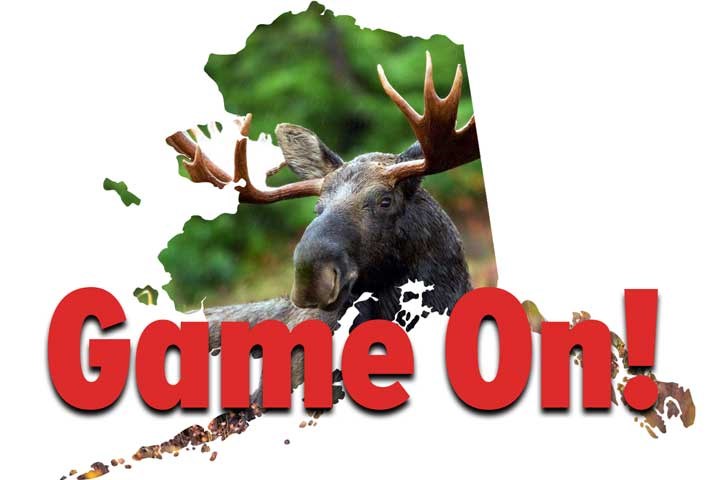
by Cody McLaughlin - Monday, June 28, 2021

Readers of this website will remember the April controversy over the Department of Interior’s (DOI) Federal Subsistence Board (FSB) move to close Alaska Game Management Units (GMUs) 23 and 26A from Aug. 1-Sept. 20, 2021, shutting down more than 40 million acres—an area eight times the size of my home state of New Jersey—to “non-local” hunters for the harvest of moose and caribou. As NRAHLF.org explained at the time, the abrupt action was based on a Northwest Arctic Subsistence Regional Advisory Council (NASRAC) proposal that lacked any wildlife science and even went against the advice of state wildlife managers. Now, according to a DOI news release, the FSB has voted to defer a decision on the proposal, titled WSA21-01, until the 2022 hunting season. In the meantime, the U.S. Fish and Wildlife Service’s Office of Subsistence Management will seek additional input on concerns from the Western Arctic Caribou Herd Working Group, Alaska Department of Fish and Game, federal land management agencies, local fish and game advisory committees, regional advisory councils, commercial guides and transporters, and rural subsistence users.
An Ongoing Fight
Hunter-backed groups from the NRA to SCI, the Dallas Safari Club and the Sportsmen’s Alliance immediately mobilized to help American hunters make their voices heard. As a result, a meeting on this special action request on Apr. 23 brought out droves of hunters, outfitters and advocates from around the nation to dispute the baseless and inexplicable closure request by the NASRAC. Attendees called into question the motives behind the closure and made several accusations of local protectionism that was at the expense of hunters nationwide and in direct opposition to the proven, world-renown North American Model of Wildlife Conservation. A petition opposing the measure was signed by over 2,400 activists nationwide to dissuade the FSB from pursuing the policy change.
Hunters must track this issue as the FSB plans to circle back to the NASRAC proposal in the near future. In the meantime, hunters can plan to hunt during the 2021 Alaska caribou and moose seasons.
The Facts on Subsistence Hunting and Harvests
As we’ve discussed before, the federal government’s Bureau of Land Management (BLM) defines a “federally qualified subsistence hunter” as “the customary and traditional uses by rural Alaska residents of wild, renewable resources for direct personal or family consumption as food, shelter, fuel, clothing, tools or transportation; for the making and selling of handicraft articles out of nonedible byproducts of fish and wildlife resources taken for personal or family consumption; and for the customary trade, barter or sharing for personal or family consumption.”
The current rural subsistence harvest, according to the BLM, is about 354 pounds of food per person per year. That is more than the U.S. average consumption of 255 pounds of domestic meat, fish and poultry per year. (The average American uses a total of 1,371 pounds of all foods per year.) However, there are other important uses of subsistence products, such as clothing, fuel, transportation, construction, home goods, sharing, customary trade, ceremony and/or arts and crafts.
While federal law grants technical authority for any Alaska public land closure to the DOI, the law’s original intent was to add a protection mechanism for both wildlife and Alaska’s rich, culturally significant history of subsistence hunting. This case is different. As previously noted, there has been no data to support the closure. Indeed, years of data indicate that the Western Arctic caribou herd and Teshepuk caribou herd are stable, and that subsistence harvest has not changed or declined over the last several years.
Sticking With Science, Remaining Vigilant
In examining the status of caribou herds alone, the math concerning the harvest of Western Arctic and Teshepuk caribou herds by so-called non-qualified “users” is pretty clear. Non-local hunters contributed only single-digit percentages to the annual Western Arctic Herd harvest, for example, since 2000. And they took even less—2.3 percent—since 2016. Those hunters aren’t making an impact on stable caribou populations.
This makes the NASRAC push, which again is to be taken up again next year, even more puzzling. The fact is, everyone agrees that respect for local culture and the prioritization of local subsistence harvests is understandable, but scientific management of the herd and for the enjoyment of all Americans is still a cornerstone of the North American Model of Wildlife Conservation.
Again, the science is clear that there are enough caribou to go around, and this request is seemingly unnecessary. Hunters would do well to keep an eye on this fight as it rears its head again ahead of the 2022 hunting season.
About the Author
A recent new resident of Alaska, Cody McLaughlin is a conservationist advocate on public policy issues including hunting, fishing, gun rights, free-market tax and wage policy and the environment. He works as a GOP consultant for conservative political causes, managing clients’ digital communications and online presence and as a trustee of the New Jersey Outdoor Alliance, helping to represent the state’s 1.2 million sportsmen in the political arena.
E-mail your comments/questions about this site to:
[email protected]
Proudly supported by The NRA Foundation and Friends of NRA fundraising.
